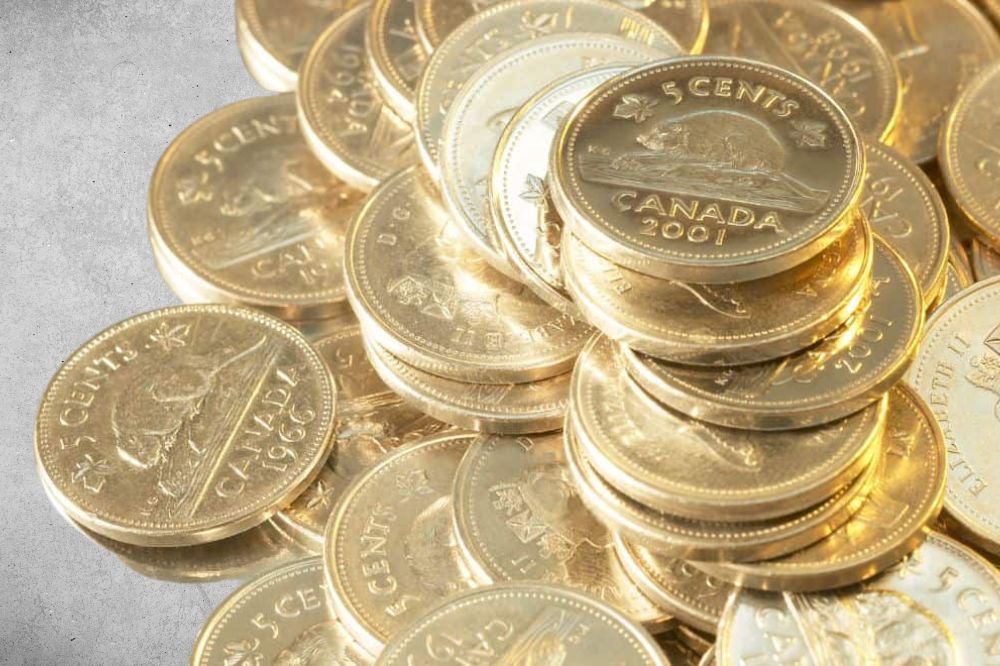Coin collecting – or numismatics, to those in the know – is a specialist matter. Coins that to the untrained eye look almost exactly the same can have wildly different values. So if you’re planning to invest – or you’ve found a hoard in the attic! – you need to know the details.
That’s where we can help!
There are lots of Canadian coins on the market, but not all are worth much money. We’re going to explore 11 of the most valuable Canadian coins. We’ll tell you how to identify them, and what makes them special. And of course, we’ll discover how much they might be worth!
Ready? Let’s find some treasure!
Most Valuable Canadian Coins
1. Canadian Silver Dollar Coin 1911
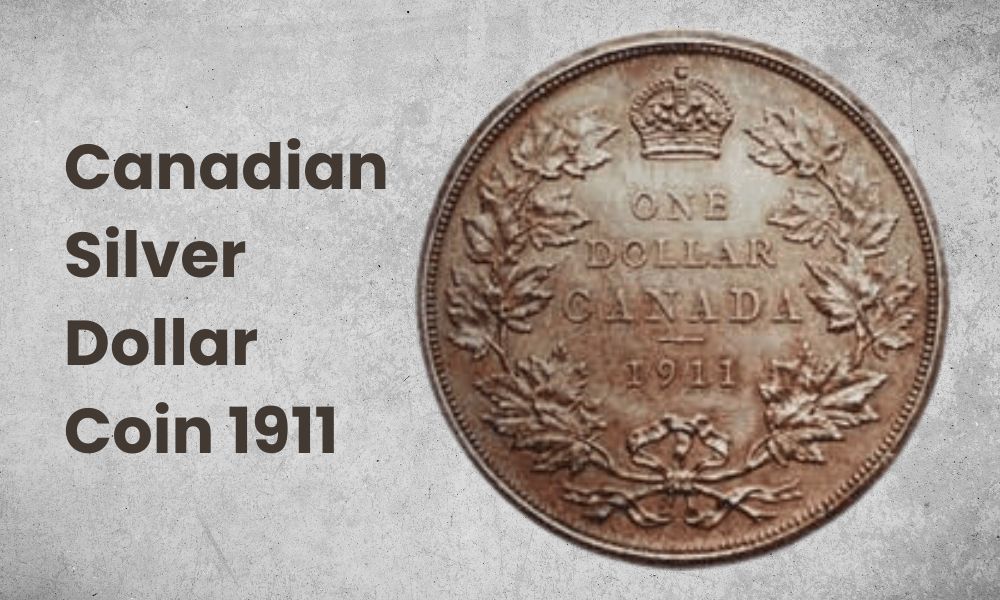
The 1911 Canadian silver dollar frequently tops lists of the rarest and most valuable coins in the world.
It was made using tools from the British Royal Mint, and there are only three known examples. Two of those were struck in silver and the third was in lead.
Why so rare? Well, the coins were never made for circulation. The examples that exist were trial strikes, known as “pattern coins”. They were produced following legislation in 1910 allowing a large silver one-dollar coin to be made.
But following an election, the incoming government in 1911 scrapped plans for the new coin. As a result, the three trials are the only known examples to exist.
For many years, the Bank of Canada’s Currency Museum owned the lead and one of the silver coins. That left only one silver dollar – known as the “Emperor” of Canadian coins – in the hands of a private collector.
No-one knows for sure how that coin entered the market in the first place. Some speculate that it was sold by a Royal Mint official to King Farouk of Egypt in the 1920s. Others believe it belonged to the Deputy Mint Master, William Frey Ellison-McCartney, and was sold by his family in the 1960s.
It last appeared at auction in 2003. It was bought then by the prominent Canadian coin collector, George H. Cook for nearly one million dollars.
On his death in 2018, Cook’s collection was sold at auction. A private dealer bought the coin and magnanimously offered it to the Currency Museum, finally reuniting all three coins.
2. Canadian Coin 1 Cent 1936 dot – PCGS SP 65
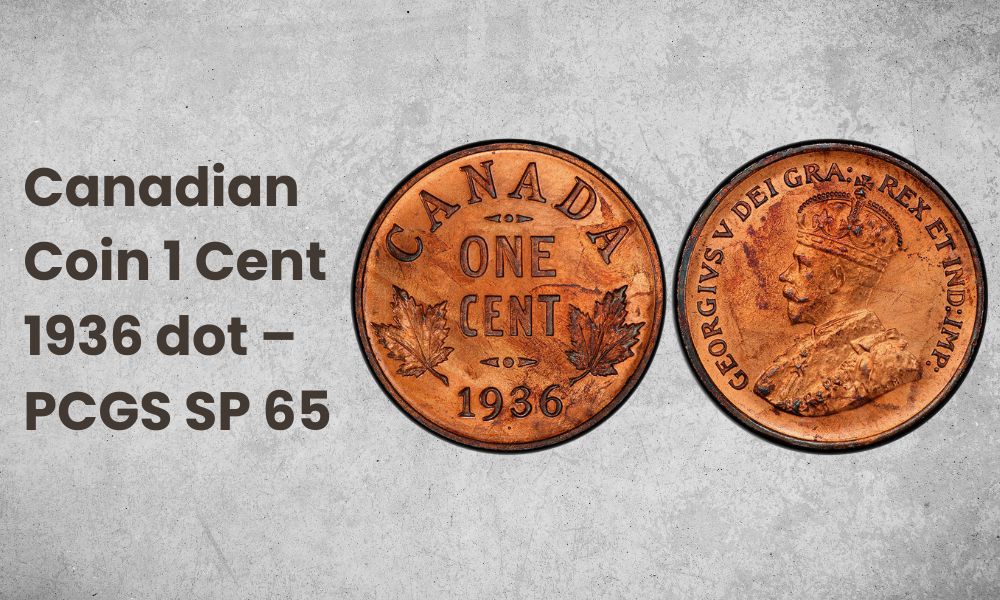
Different examples of the 1936 dot 1-cent coin have sold for upwards of 400,000 Canadian dollars. So what makes it so special?
The coin is connected to a unique moment in history – the abdication of Edward VIII late in 1936. Edward gave up the throne to marry American divorcee Wallis Simpson, leaving his younger brother to become King George VI.
That presented a problem for the Royal Canadian Mint. They had no effigies of the new king to use for their coins.
Their solution was to produce a small quantity of coins marked 1936. These still bore the profile of Edward’s and George’s father, George V. A tiny dot above the date was used to signify that the coins had actually been struck in 1937.
These “dot” coins were also made in 25 and 10 cent pieces. But it is the 1-cent dot that is the rarest and most valuable.
If you’re wondering about the letters after the coin, these tell you about its grading, or quality. The PCGS stands for the Professional Coin Grading Service, the authority which has certified the coin.
SP stands for “specimen”. That’s a type of coin somewhere between a “mint state” and a “proof”. Mint state coins are those that were produced for circulation and you’ll see “MS” in the coin grading. Proof coins were produced to a higher quality for collectors, and are abbreviated “PF”.
The final two digits refer to the quality of the striking. 63, for example, means the coin was well struck, with moderate marks. The higher the number, the better the quality.
This specific coin – of grade PCGS SP 65 – sold for $455,600 at auction in 2021.
3. Canadian Coin 10 Cents 1936 dot – PCGS SP 63+
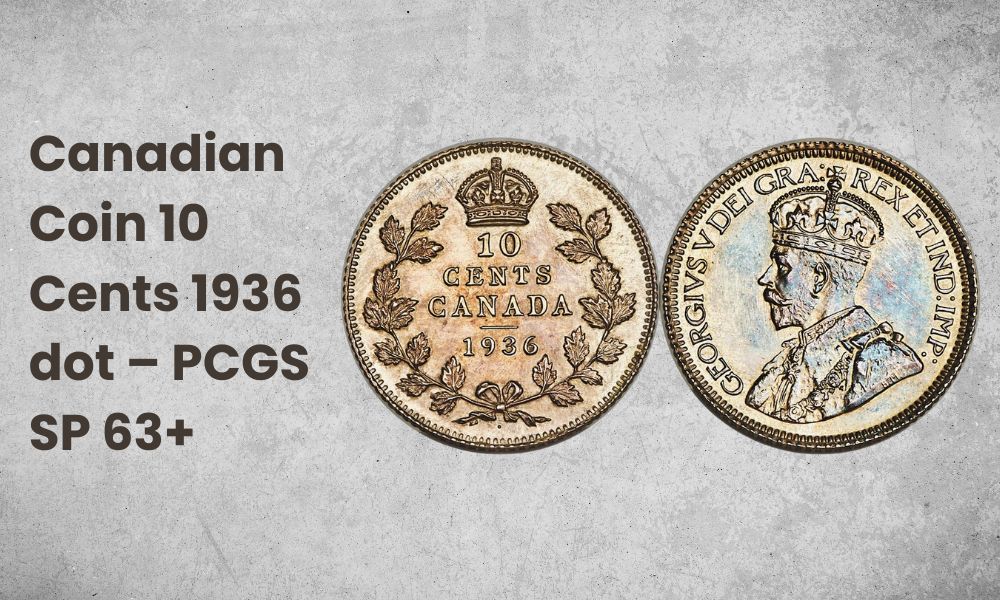
The 10 cents 1936 dot is slightly less rare than its 1-cent counterpart. But it’s still a very valuable coin.
Only three examples are known to exist outside museums. And only five sales have taken place since 1997. In 2019, a coin graded PCGS SP 63+ sold for 87,800 Canadian dollars. Nine years earlier, a higher graded version – PCGS SP 68 – sold for 196,500 Canadian dollars.
Of course, coin markets fluctuate over time. But those results show just how much the value of individual coins depends on their quality and condition.
4. Canadian Coin 50 Cents 1874 Newfoundland – PCGS SP 67 Cameo
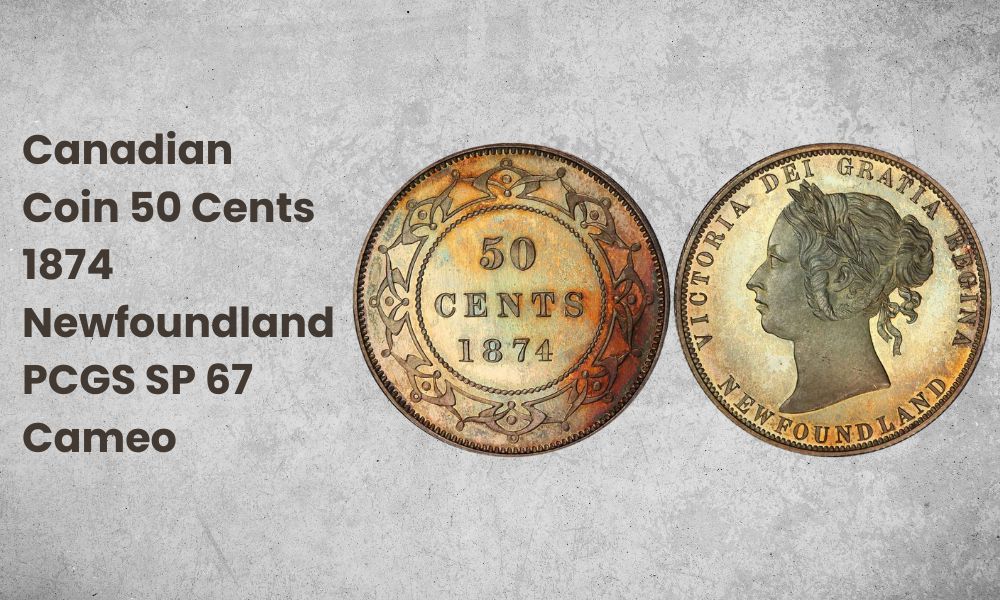
The value of Newfoundland coins can vary significantly. Factors influencing price include quality, wear, rarity and finish.
This 50 cent coin from 1874 is one of the rarest of the rare. The coin is unknown in mint state, and only two specimen coins are known to exist. This one, sold at auction in 2021, achieved the eye-watering price of 75,600 Canadian dollars.
Part of what made this coin so rare was its “cameo” designation from the PCGS. This is awarded to coins that have what is known as “frosting” on the main parts of the design. Frosting is a white, slightly grainy finish on the raised elements.
Cameo coins must have this frosting on both sides. Coins that have heavier levels of frosting on both sides are known as “deep cameos”.
5. 1921 Canadian Coin 50 Cents – ICCS VG 8
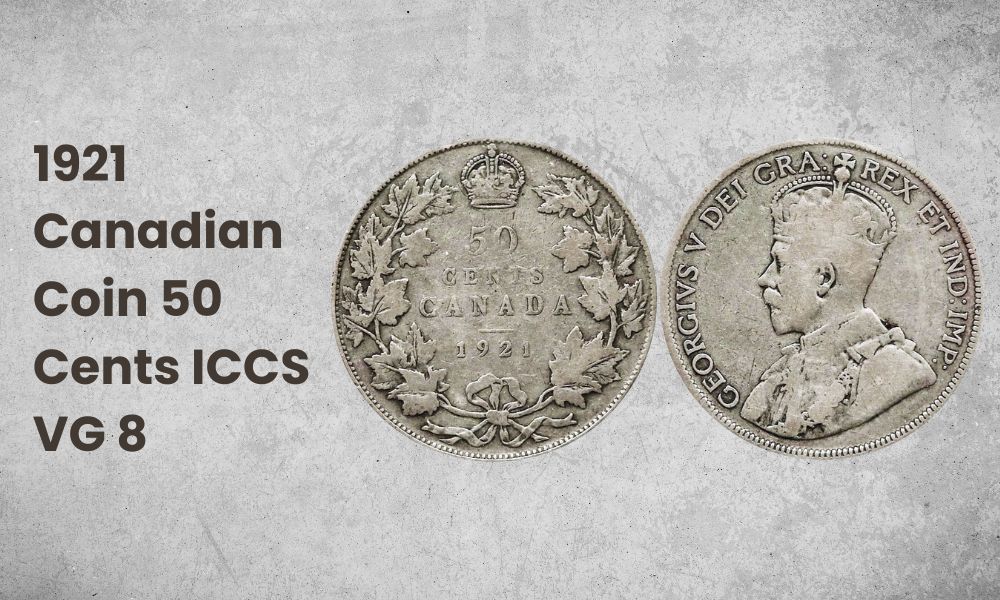
Although around 20,000 50 cent coins were struck in 1921, demand was low that year. Most of the coins remained in storage for another eight years.
When demand increased, the Mint could have released them to the public – but there was a problem. The coins were eight years old and looked brand new. Mint officials were concerned that people might believe them to be fakes.
To avoid this problem, they decided to melt them down, with some of the silver used for new coins. Only about 200 of the 1921 coins are thought to remain in existence today. That makes them both rare and valuable.
This particular coin was certified by the International Coin Certification Service, a Canadian outfit. The categories used by the ICCS are different to those of the PCGS. VG simply stands for “very good” and 8 is the number that fits with that designation.
The coin made 55,000 Canadian dollars when it was sold in June 2021. Again, condition is key. A mint state version of the same coin, graded 66 by the PCGS, sold two years earlier for 319,890 Canadian dollars.
6.Canadian Coin Sovereign 1908-C – PCGS SP 66
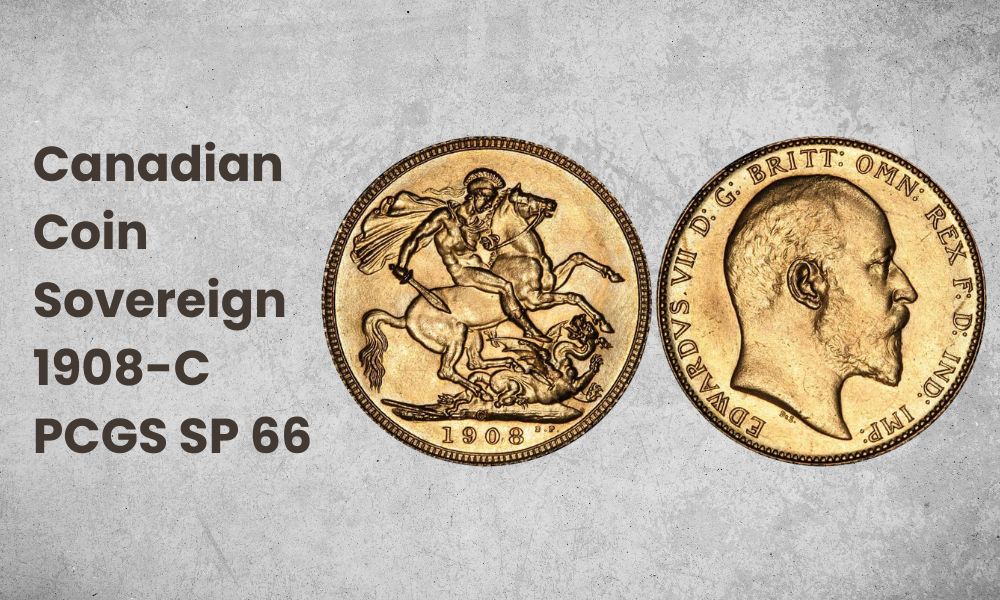
Back in 1908 the Ottawa Mint was still a branch of the British Royal Mint. As such, it produced gold sovereigns for London. They can be distinguished from their British brethren by the “C” that appears above the date.
Few of the coins were made – 636 in all – and they were all specimen finishes. In other words, they were finished to a high standard suitable for collectors.
All this, together with the integral value of the gold content, makes them collectable – and expensive.
Six of these coins appeared on the market between 2021 and 2022. Their prices varied from 10,115 Canadian dollars for a coin graded 60, to nearly 40,000 for a grade 66 coin.
7. Canadian Coin 1 Cent 1859 Brass – NGC VF 20
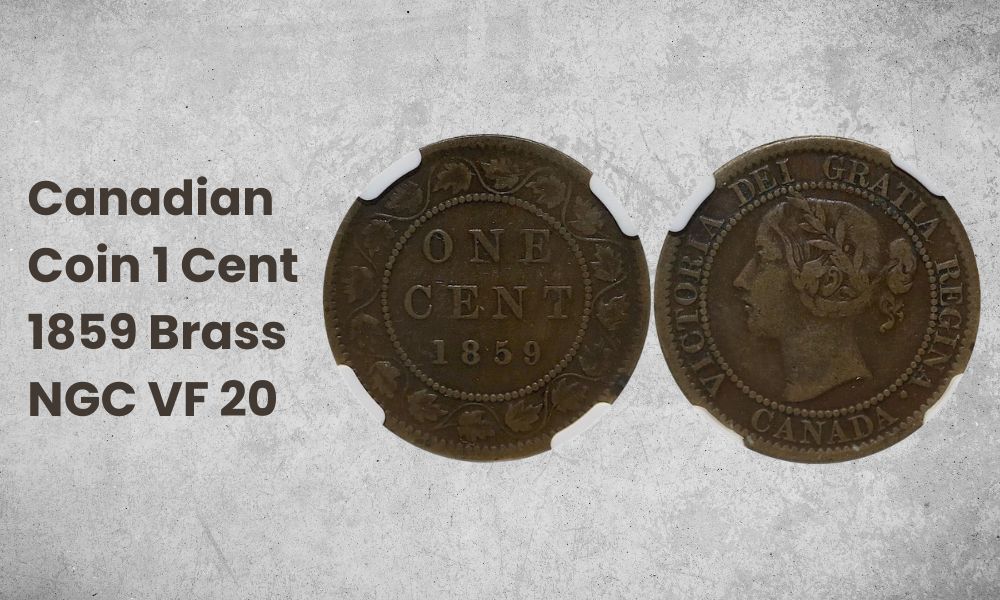
The 1859 1 cent coin is one of the most studied and collected of Canadian coins. It comes in a number of different varieties, providing lots of interest to seasoned numismatists.
In 1850, Canada’s legislature passed a bill allowing what was then still a British province to have its own currency. The new law stated that the coins should be made in denominations of pence, shillings and pounds.
The Brits, however, objected. They felt that coinage was a matter for the Queen. And they also feared that a different currency could harm trade between Canada and Britain.
Undeterred, the Canadians passed another law – which was again disallowed. The cycle repeated itself several times until 1857. Then a new decimal system, using dollars and cents, was eventually established.
The first coins under the new system weren’t produced until the end of 1858. The following year, however, saw over 9.5 million one cent coins struck. But it’s the variety between those coins that makes them so interesting.
Some of the 1859 coins were actually re-dated 1858 versions, with the 8 changed to a 9. And the way that the dates were altered differs too, with some methods rarer than others.
The rarest of all the 1859 1 cents are brass – like this one, graded by the Numismatic Guaranty Corporation. The designation VF 20 means the coin has moderate detail to the design, with sharp letters and digits. It sold in 2021 for almost 33,000 Canadian dollars.
8. Canadian Coin 5 Cents 1921 – PCGS SP 63
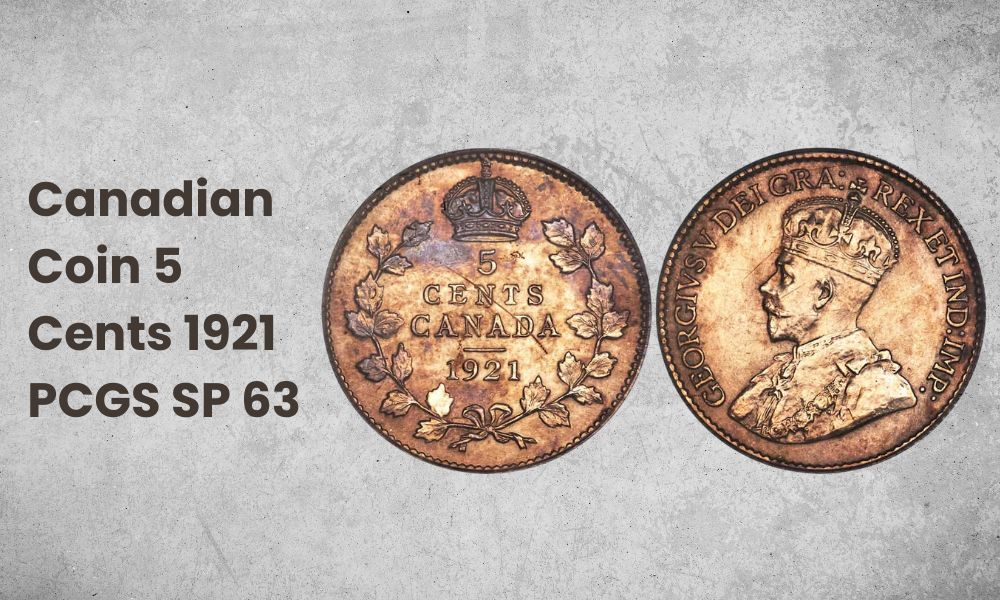
This 5 cent coin from 1921 is a rare survivor of a purge. That year saw legislation passed to remove the silver 5 cent coins from circulation in favor of larger nickel versions. Most were melted down, and only about 400 are thought to have survived.
Specimen versions of the coin are even rarer. There are thought to be only around eight such coins in existence. This once, graded 63 by the PCGS, achieved a price of 26,775 Canadian dollars when it was sold in 2021.
9. Canadian Coin 25 Cents 1969 Struck on Gold – NGC MS 65
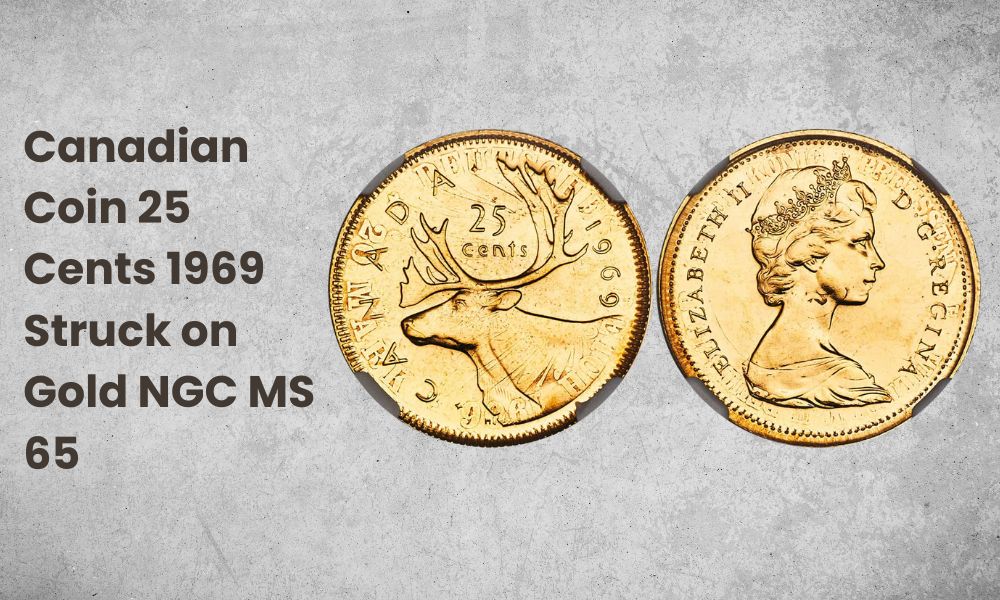
Some coins are truly one of a kind – and this 25 cent piece from 1969 is one such example.
It was struck in error over another coin. The original dated from 1906 and was a 20 mark coin from the German Sates, Prussia. Look closely, and you can see lots of details from the original coin.
Mistakes of this kind are very rare, which of course makes coins like this highly sought after. The fact that this one is made of gold – and is rather beautiful – helps its value too.
It was sold in January 2021 by Heritage Auctions. The price? 26,700 Canadian dollars. Not a bad return for a coin that was never supposed to have been made!
10. Canadian Coin 50 Cents 1890 – PCGS MS 65
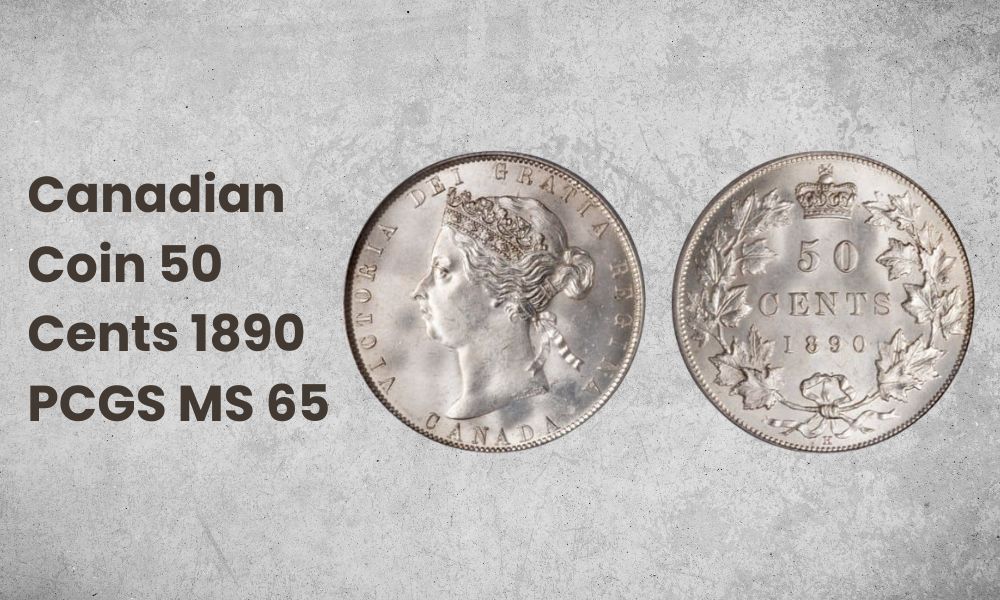
Another early coin, this 50 cent piece bears the portrait of Queen Victoria. 50 cent coins from this year vary widely in price, with the quality, wear and condition being key.
You could pick up a coin like this graded AG 3 for about 650 Canadian dollars. The AG here stands for “about good” or “almost good”. It means that most of the design will be outlined, but the rims will have been worn down. That wear is usually enough to obliterate some details, like stars or lettering.
If you want a coin in better condition, the price will rise steeply. This coin, graded mint state 65, sold at auction in 2010 for 274,100 Canadian dollars.
11. Canadian Coin Elizabeth II Gold Proof Golden Jubilee Canadian Dollar 2003 – PCGS PR 67
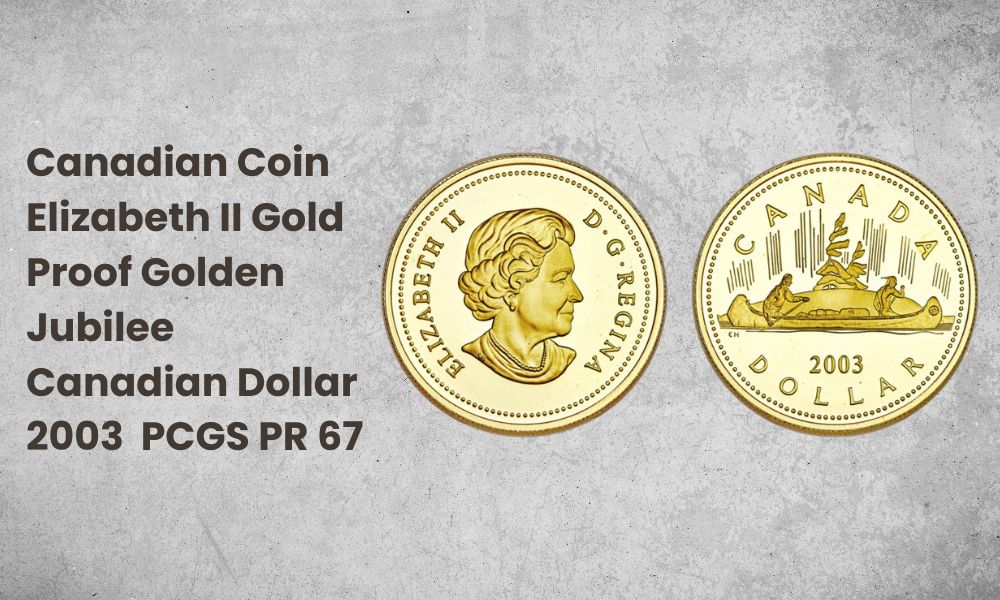
It’s not just older coins that can be very valuable. This gold proof dollar coin was struck in 2003 to commemorate the golden jubilee of Queen Elizabeth II.
The obverse bears a portrait of Her Majesty, while the reverse depicts two Native Americans in a canoe. Both the gold content and the historical significance of the coin add to its value. So although it’s younger than most coin collectors, owning one of these coins is still an expensive business.
Because most will have been bought by collectors, they’re likely to be kept in good condition. So it was with this coin, graded by the PCGS at 67. That means it was well struck, and the condition remains virtually the same as it was at that moment.
That exemplary condition was reflected in the price when it came to market in 2021. It made 103,000 Canadian dollars.
All That Glitters
That brings us to the end of our look at 11 of the most valuable Canadian coins in existence.
If you’re searching for the rarest specimens, the sky is the limit. But similar coins of less exalted quality can be purchased at a far more reasonable price. That puts owning a piece of history within reach of far more collectors.
We hope you’ve enjoyed learning more about these fascinating coins – and the insights they give us into the past.
